Three Capes Track
Tasmania
Hiking the Three Capes Track the old-fashioned way
Photo credit: Tasmania Parks and Wildlife Service
If you thought you’d missed the opportunity to hike the Three Capes Track when the new hut-to-hut walk was launched, think again. It’s still possible the old-fashioned way!
When Tasmania Parks and Wildlife Service revealed their luxury Three Capes Track, there was much hoo-ha about the $495 price tag, but while there certainly is a market for those who like to be pampered on their hiking holidays, that experience can and does sit side by side with a traditional bushwalk, narrow, muddy tracks, camping and all.
Yes, avid independent adventurers can look forward to a wonderful walk along an old single track through dripping cloud forest, before spending a night tucked up in a nylon dome with a gas stove. They need only join the modern, upgraded track for the trek out to Cape Pillar and the descent from Mt. Fortescue. And while it’s perfectly possible to meander along this route over five days, we thought it would be more fun to fastpack it into a long weekend, packing light and running the runnable sections.
[In case you didn’t know, the Three Capes Track only has two capes. Cape Raoul, which was always planned for inclusion, has not yet been incorporated. This may happen soon, but in the meantime, anyone can visit it as a 14km day walk, the trailhead 16km from Port Arthur.]
-
Location
Tasmania
-
Distance
78km
-
Duration
3-5 Days
-
When to go
Year Round
-
Sleeping
Camping
-
Permit required
Yes - Tas Parks
Highlights
- The dolerite columns of the capes, culminating in the iconic Candlestick and Totem Pole.
- The unbridled joy of running through the forest with a light pack.
- A dawn dip at Fortescue Bay, where the water is often warmer than the air.
- The plethora of delicate fern and fungi species decorating the forest tracks.
- The chance of seeing a Devil in the wild.
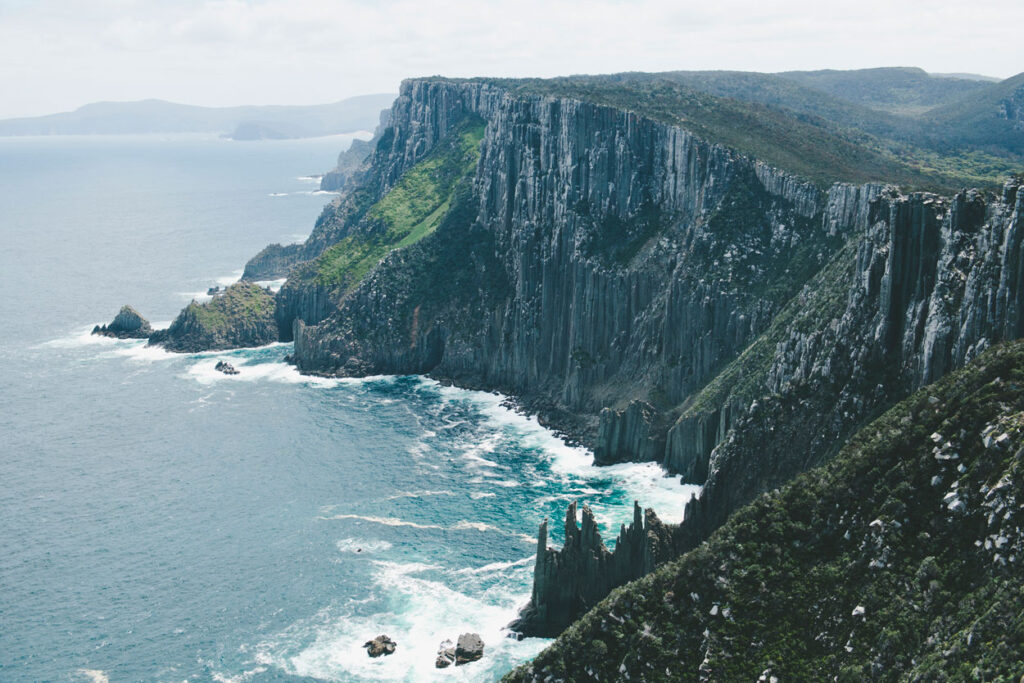
History
The first modern-day hikers on the peninsula were likely escaped convicts from the penal settlement at Port Arthur. Their journeys usually ended at Eaglehawk Neck, the narrow, heavily guarded causeway that made the whole peninsula one big open-air prison. More recently, members of the Hobart Bushwalking Club pioneered the recreational exploration of the peninsula by foot in the early 1970s, creating and maintaining numerous walking tracks. Those routes were the only option until 2015, when Tasmania Parks and Wildlife Service launched their watershed luxury hike experience, creating a 46km, four-day walk along groomed trails and kilometers of boardwalk, interspersed with purpose-built lodges.
When to go
While the Three Capes Tracks are open all year round, only the most masochistic would go in winter, when the risks of snow and storms are at their highest. That’s not to say that good weather is guaranteed any other time – quite the opposite. March is often the most settled month in Tasmania, although the unique position of the peninsula between weather systems gives it a very different forecast to nearby Hobart. Pack for all seasons, even in the height of summer.
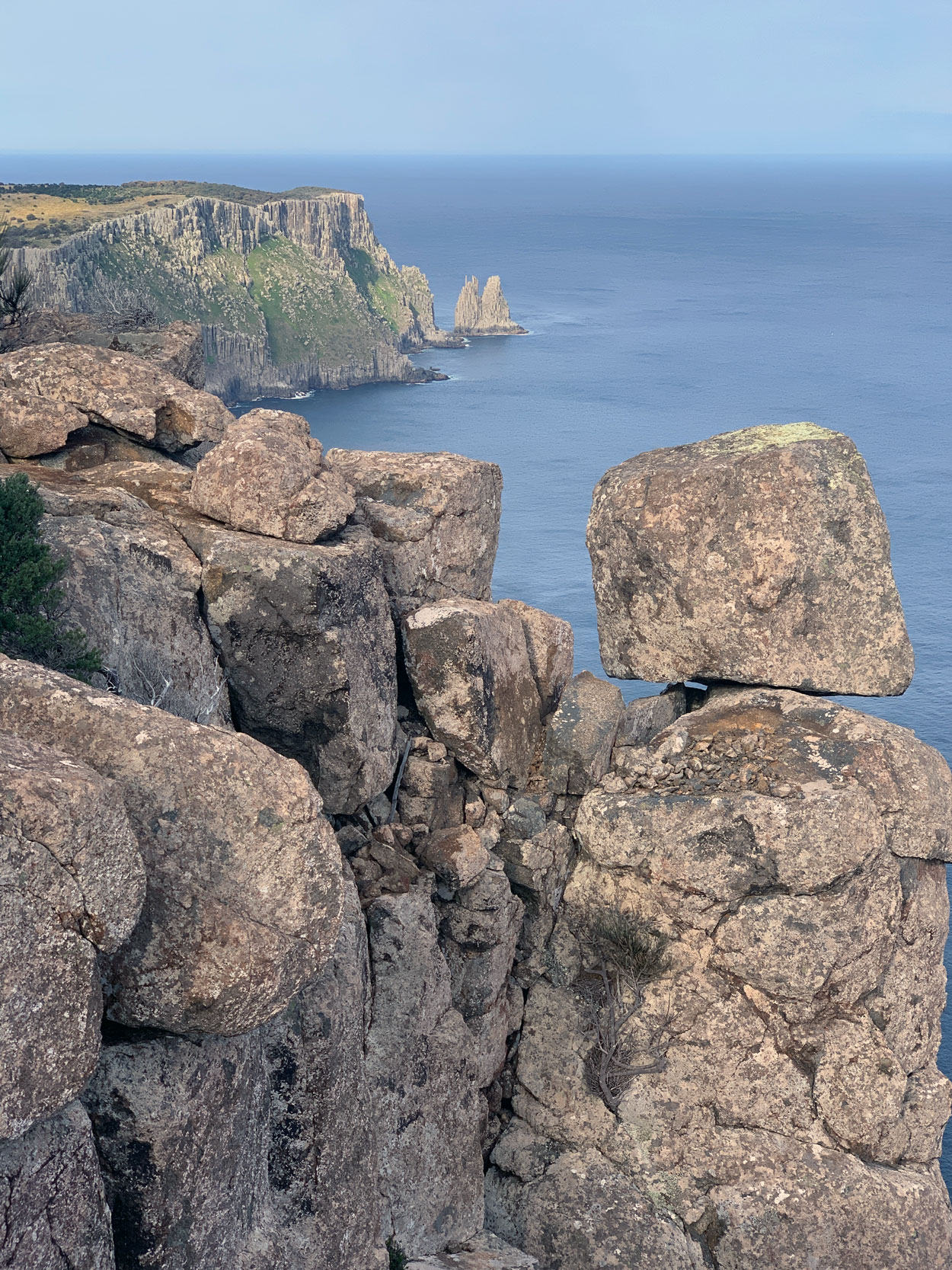
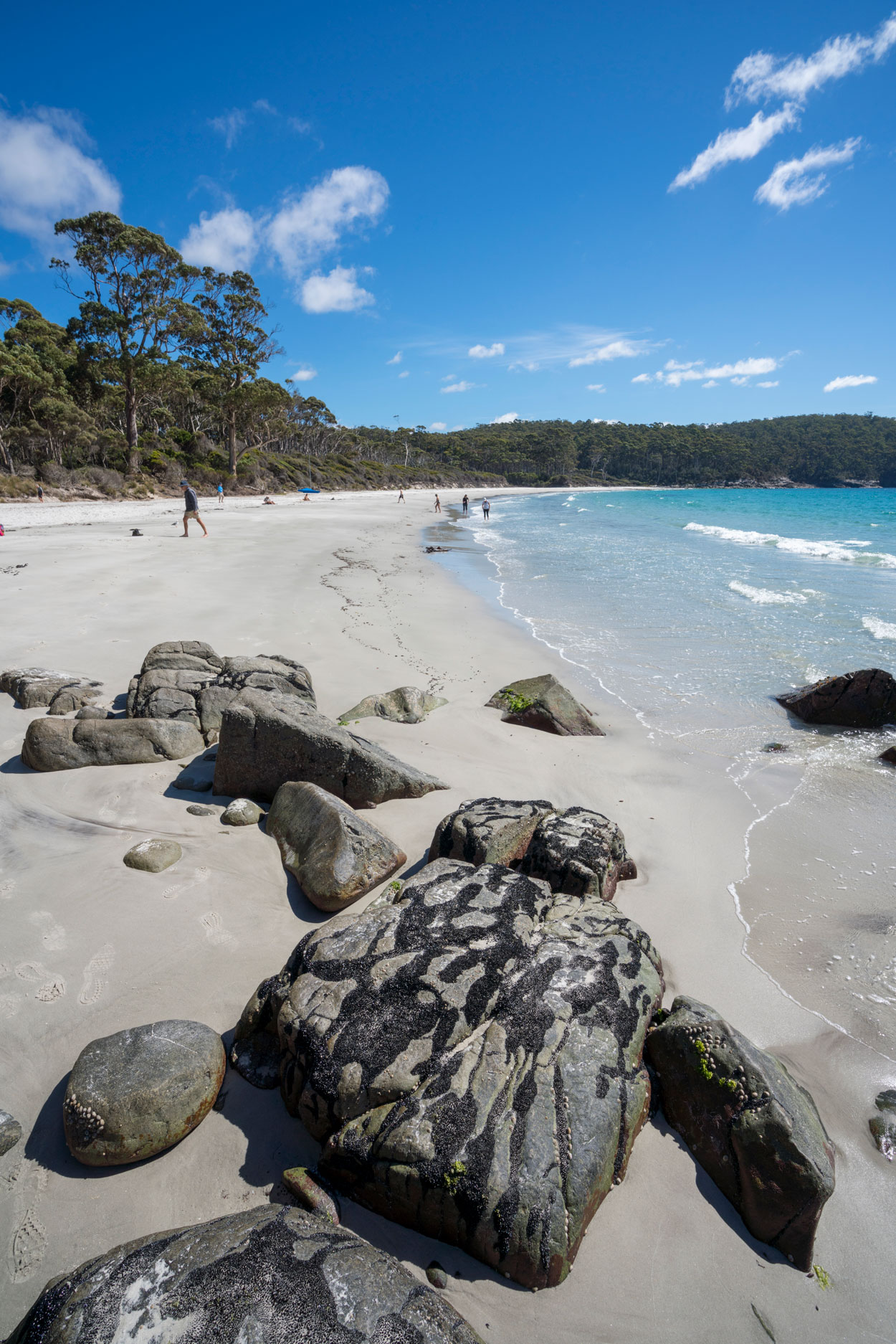
Access
Unless you’re a Tassie resident, you’re going to need to organize transport. As visitors from the mainland, it was easier for us to organize transport to Eaglehawk Neck and then out of Fortescue Bay than hire cars and do a shuffle. Pennicott Wilderness Journeys, the official transport partner of the Three Capes Track, offer one-way transfers from Hobart to Port Arthur for $35, and are happy to drop people off at Eaglehawk Neck on the way. If you can get a lift to Tasman Arch, that’ll save you 4km of road walking. We also hitched a cheeky lift on their end-of-hike pickup service from Fortescue Bay to Port Arthur (2:30pm and 4pm daily), along with the fancy hikers. There is a single Tassieink bus service per day (route 734, $21 Hobart-Eaglehawk Neck) but the timetable does not line up well with walking times. Another alternative is to add an extra day to the walk by retracing your steps from Fortescue to Tasman Arch and your waiting vehicle.
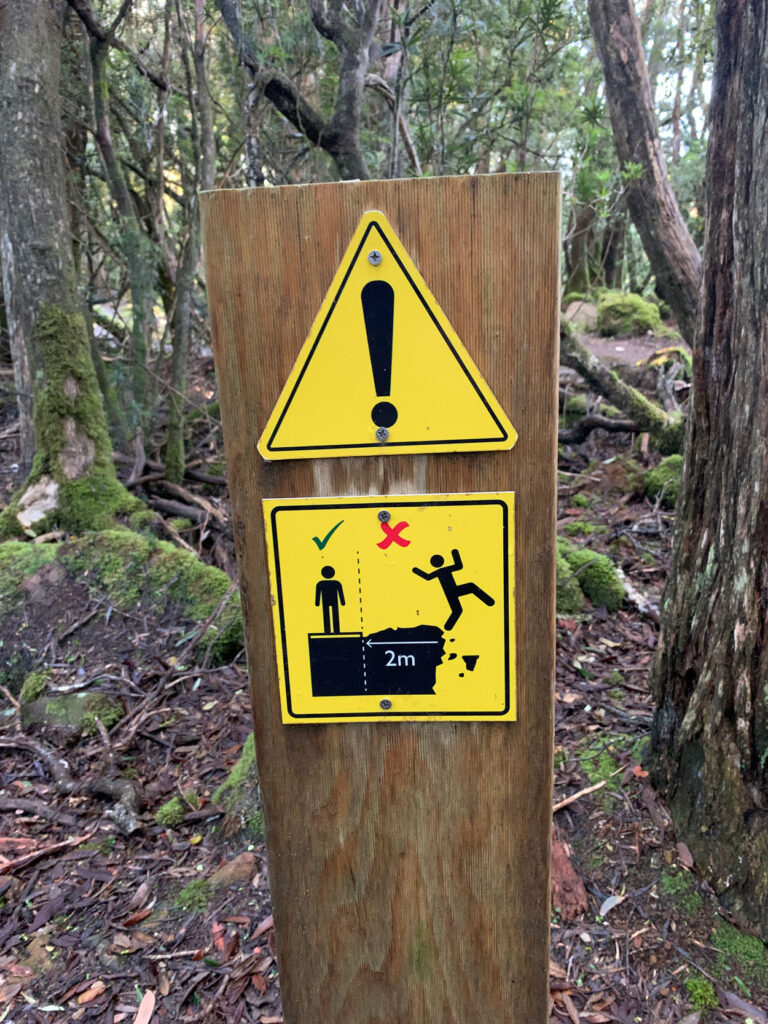
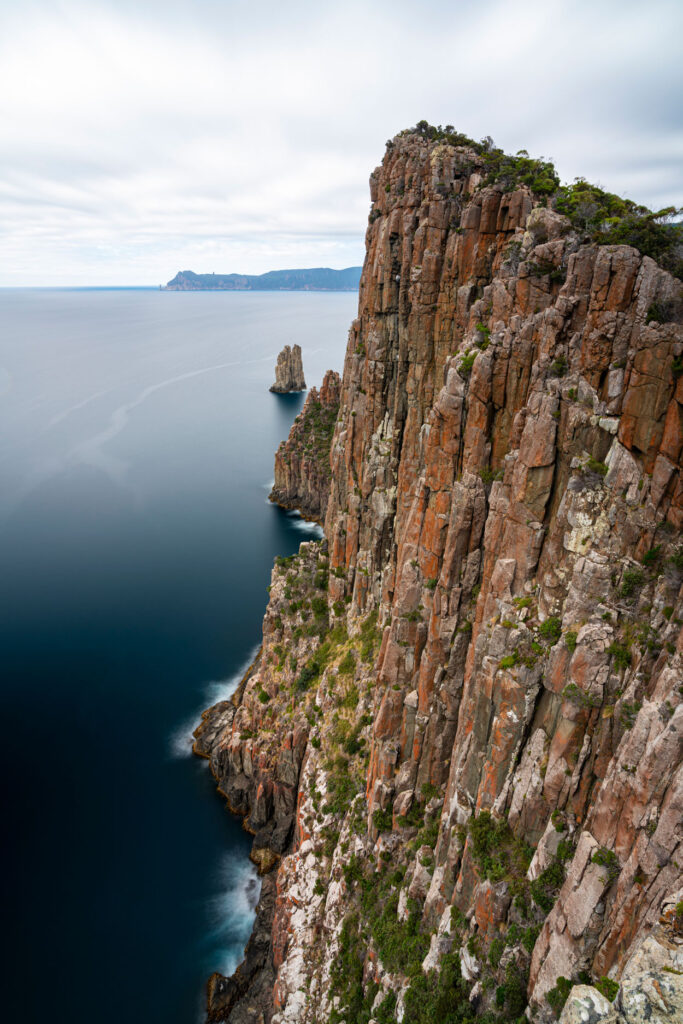
Accommodation
There are three campsites along the route. Fortescue Bay is a fully-equipped site behind a beautiful beach. Expect flat ground, over-friendly possums, gas barbecues, fire pits (only usable when restrictions are not in force), clean tap water, cold showers, and a resident ranger during the summer. Bare Knoll is much more basic, with wooden platforms for eight tents, a composting toilet and an untreated water tank. Wughalee Falls site has the same amenities as Bare Knoll but attracts more wildlife, in the form of birds, mosquitoes and leeches. We chose Bare Knoll.
Safety
The weather should always be respected, from violent wind and storms, hypothermia and high UV ratings. There are poisonous snakes around but you’re more likely to sustain leech injuries than any other. Death by falling is probably your biggest safety concern here. For much of its distance, the route follows the top of vertical cliffs, which drop as far as 300m into the turbulent ocean below. While the tracks themselves are a safe distance from the edge (mostly!), there’s nothing to stop daredevils from ‘hanging ten’ for impressive trip photos. Just be aware that random and strong gusts of wind can occur at anytime, against which you’ll have no defense.
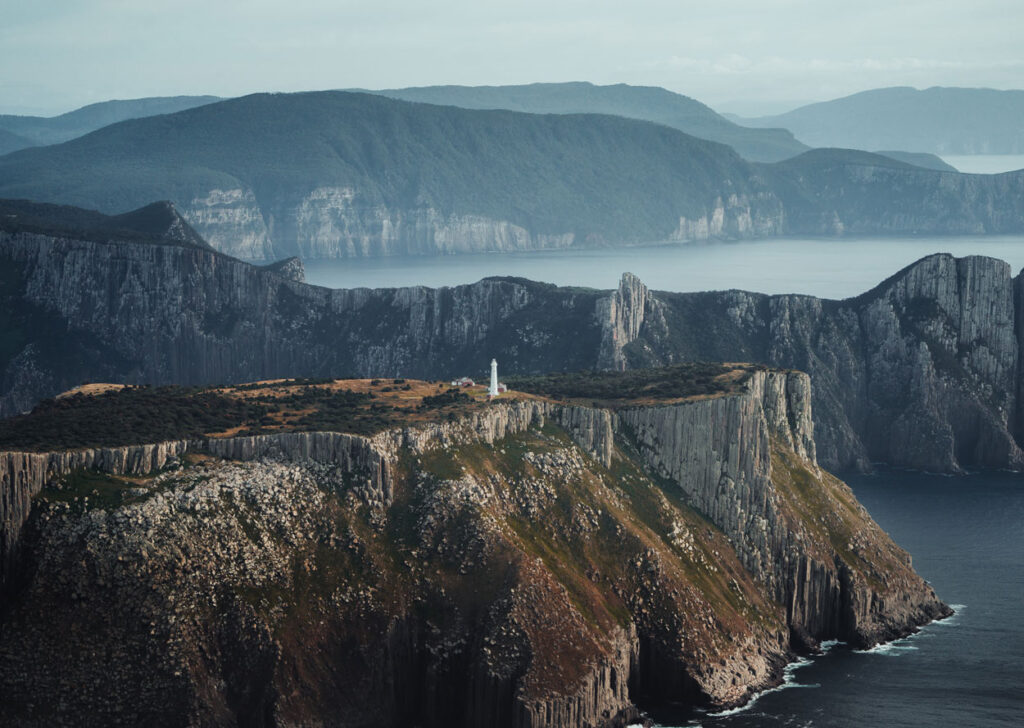
Costs
There are several ways to buy a Tas Parks pass for The Three Capes Track. We opted for daily passes at $20 per person per day, but if you have a vehicle, you can combine eight people for $40 per day, or the $80 vehicle pass for two months is even better value. If you’re a regular Tassie fanatic, full-year and two-year passes are available for $90 or $115 per person respectively. Camping at Fortescue Bay costs just $13 per two-person site, while the other sites are free. Booking is advised at Fortescue between September and April.
Useful Links
https://parks.tas.gov.au/explore-our-parks/tasman-national-park/tasman-coastal-trail
https://parks.tas.gov.au/explore-our-parks/tasman-national-park/cape-pillar
https://parks.tas.gov.au/explore-our-parks/tasman-national-park/cape-hauy
https://parks.tas.gov.au/explore-our-parks/tasman-national-park/fortescue-bay-camping
More Adventures like this
-
Australia's most famous multi-day hike, the Overland Track is 65 km, six-day trek through the heart of the Cradle Mountain-Lake St Clair National Park.
The Overland Track
Tasmania
-
The Thorsborne Trail on Hinchinbrook Island, Queensland, is rated as one of the best multi-day hikes in Australia, and features in Lonely Planet’s “Epic Hikes of The World.” Just a few hours dri...
Thorsborne Trail
Hinchinbrook Island, QLD
-
The Cooloola Great Walk is an existing 102-kilometre walking and camping trail that links the Noosa North Shore with Rainbow Beach in Queensland. Pristine beaches, huge sand blows, the rare Noosa ever...
Cooloola Great Walk
Great Sandy National Park, QLD
-
Experience hiking the best of the Victorian Alps with this traverse between two classic peaks; Feathertop to Bogong Hut.
Hiking Feathertop to Bogong
Victorian Alps
-
Bikepacking the Queen Charlotte Track
Marlborough Sounds, New Zealand







